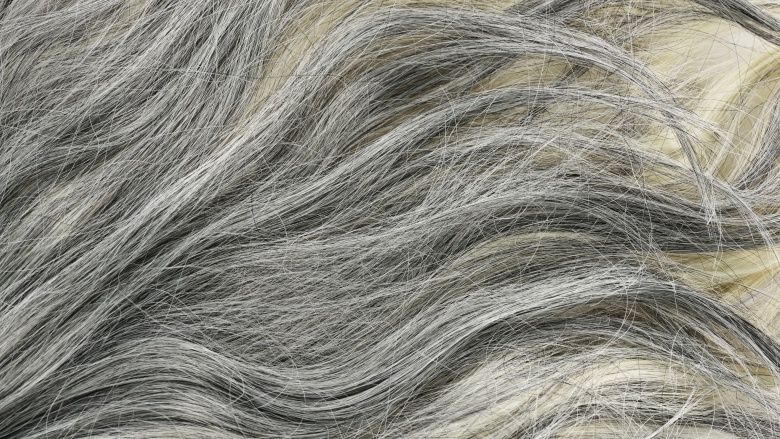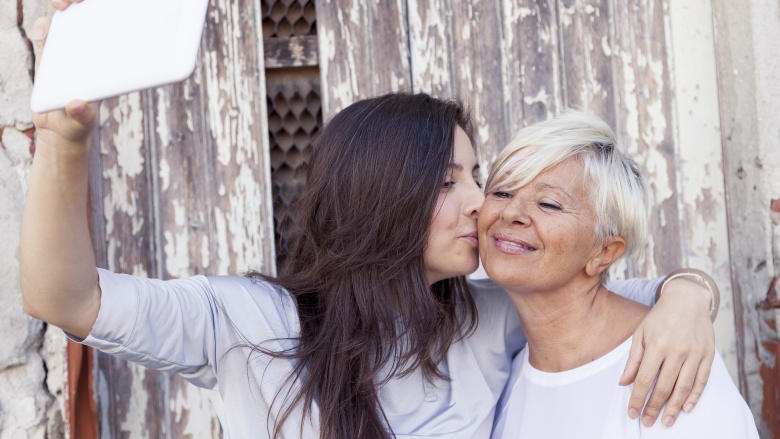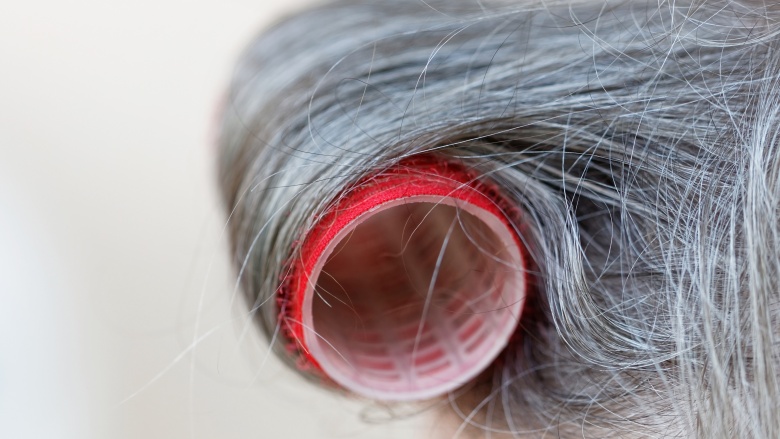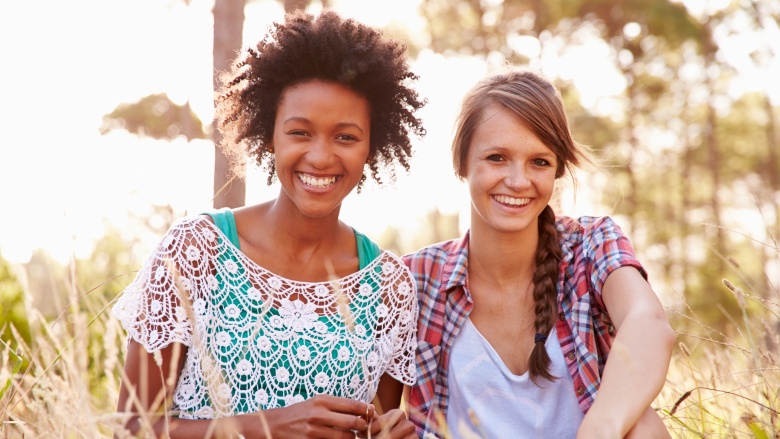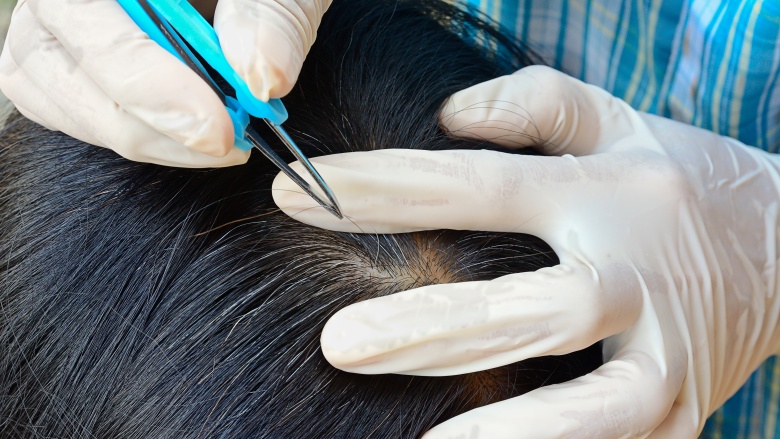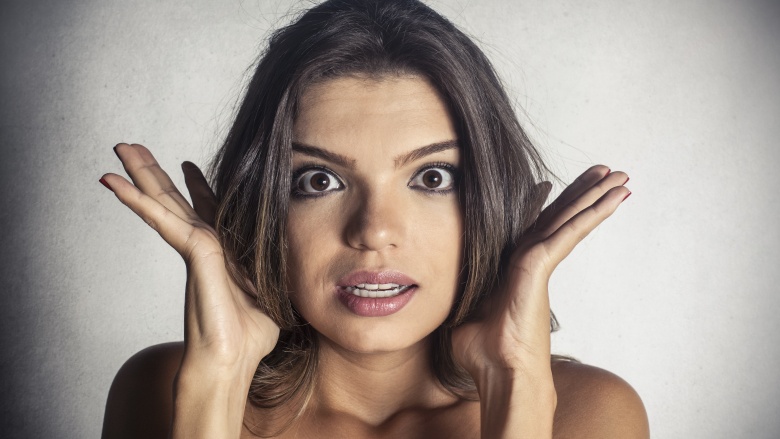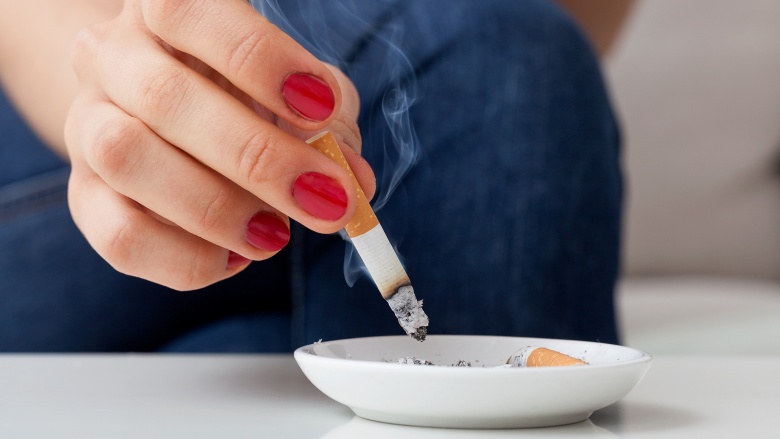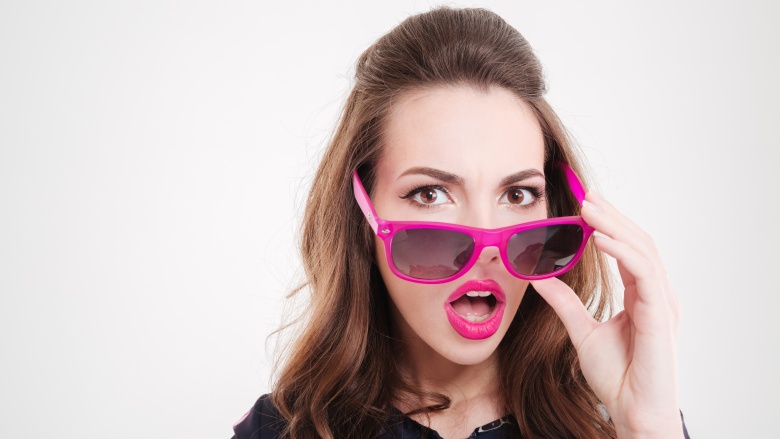What's Really Happening When Your Hair Goes Gray
Every woman knows the day will come, and every woman dreads it. You look in the mirror, and there it is — your first gray hair. What's up with that?
Not that it's going to make you feel any better at the moment, but gray hair is very common. One 2012 study found that about 74 percent of people between the ages of 45 and 65 have at least some gray hair. At least you're not alone in your misery, right? It's time to figure out what's going on with that graying hair. I spoke with some experts to find out what's happening when your hair goes gray — and if you can stop it.
Why hair goes gray
Your hair hasn't always been the same color that it is now. According to Miami dermatologist Dr. Jill Waibel, our hair is white while we are in utero, and when melanocytes begin to form, our hair takes on its natural color. Whether that color is black, brown, blonde, red, or some combination of those depends on the distribution, type, and amount of melanin in the middle layer of the hair shaft, which works to pigment your tresses.
"Melanocytes continue to introduce melanin into the hair's keratin giving us the hair color we are born with. As years progress, the enzyme called telomerase slows down the production of melanin and this causes the hair to become lighter and lighter," she said.
When will it happen?
All you 30-somethings out there are probably screaming that you're not old enough for gray hair, but it does often start to happen in your 30s. That doesn't mean it has to start then, though. Dr. Alan Bauman, board-certified hair restoration physician and hair science expert, says when your hair starts to gray is determined more by genetics than age alone.
"Similar to hair loss, gray hair is primarily the result of genetics. You can look to your parents or grandparents for a glimpse of what the future may hold for your locks," he said. Basically, ask your parents when they got their first gray hairs, and you may just be getting a glimpse into your future.
Where will it happen first?
Of course you're not going to wake up one day and be totally gray. It's a process, and that process typically follows a pattern. Gray hairs will first appear around your temples, and slowly fill in and move up and around your scalp. While it's not lucky that they tend to show up first right up front, at least you can take comfort in the fact that if your temples aren't gray, there probably aren't any in the back of your head you don't know about, either.
Your ethnicity plays a role
Your ethnicity also has a lot do do with when you start to see gray hair. "It is normal for Caucasians to begin to get grey hair in their mid 30s, Asians in their late 30s, and African Americans in their mid 40s," explained dermatologist Dr. Jill Waibel. Other studies have confirmed that fact, stating that those of Asian and African descent usually have far less gray when compared with Caucasians of the same age.
Plucking it won't double your trouble
We've all heard that old wive's tale about plucking your gray hairs, right? Pull one, and two more grow back in its place. You'll be happy to hear that's not even a little bit true. Cosmetic scientist Randy Schueller told Today that when you pluck a hair, that follicle stays in place, and will eventually grow another hair. In fact, you might get lucky and the hair that takes it place might not even be gray.
Still, reaching for those tweezers might be a risky move. Schueller says too much plucking can actually damage the follicle, meaning no hair would grow back at all. Gray hair has got to be better than no hair, wouldn't you say?
Ladies aren't first
I think we can all agree that "ladies first" isn't always a good thing — especially when it comes to gray hair. A 2012 study found that when comparing men and women of similar ages, men had a lot more gray hair than women. It's a good thing some women like their men with a little bit of salt and pepper going on, right?
You can stress yourself gray
We like to throw around the thought that all of the stress in our lives is giving us gray hair, but can it really? Dr. Alan Bauman says it can, sometimes. "Stress, like many others lifestyle factors, can have a significant impact on the health of our hair. Stress alone isn't going to turn your hair gray overnight, though at times is may feel like that, but it can speed up the process in those who are genetically predisposed to go gray earlier," he said.
Gray hairs don't mean you're old
Gray hair may make you look older, but it doesn't necessarily mean you are older. One major study looked for a link between heart disease (something we're more at risk for as we age) and physical signs of aging like graying hair or wrinkles, and found no correlation. That reinforces the saying that you're as old as you feel — good news, right?
There are other risk factors
Age and genetics aren't the only things that dictate when you start going gray. There are other factors in your life — both in and out of your control — that can cause it to happen faster. "For example, many things that detrimentally affect your health are also thought to accelerate the appearance, and onset, or gray hair," said Dr. Alan Bauman. "Diet, stress, poor sleep, medications, smoking, etc. can all impact the onset of the appearance of gray hair."
Dr. Jill Waibel, a dermatologist, says certain medical conditions can cause it, too. "Premature graying of hair can be caused by certain syndromes such as Hutchinson's progeria, or Werner syndrome (where every aspect of aging is accelerated), pernicious anemia, autoimmune thyroid disease, or Down syndrome." She said other health-related issues can cause your hair to gray early, including a vitamin B12 deficiency and abnormalities in the pituitary gland.
What about your "other" hair?
You know you're thinking it. If the hair on your head is starting to gray, what about the hair everywhere else? This time, my friends, I have good news for you. Just because one turns gray doesn't mean the other is about to follow suit. Hairs on the rest of your body, like arms, legs and pubic hair, may grow gray much later than the hair on your head — or maybe not all. Thank goodness for small wonders.
You might be able to reverse your gray hair
Believe it or not, it may be possible to stop, reverse, or at least slow down the graying of your hair. "Some of the best ingredients to counteract the signs of aging hair include caffeine and niacinamide, which are known for their anti-aging properties in the skin. The Chinese herb Fo-Ti is purported to have a positive effect on reversing gray hair but has never been proven scientifically," said Dr. Alan Bauman. "Gray hair is tricky. We don't have a complete understanding of why hair goes gray, so there hasn't been much progress in the way of preventing it."
Dr Bauman continued, "The best advice I have for men and women looking to reduce the signs of aging on your hair is to focus on building better hair. You can do this by eliminating risk factors like poor diet or other health issues, stress management, add hair vitamins to your regimen, or you can also give your hair a boost with low level laser therapy, topical prescription minoxidil, or platelet rich plasma treatments."
It's time to face the facts, ladies. You may be able to slow it down, but gray hair is going to happen to you eventually. You might choose to rock your new shade, or you may head straight to the pharmacy for a box of dye — whatever works for you is fine. At least now, you'll understand more about why it's happening.


